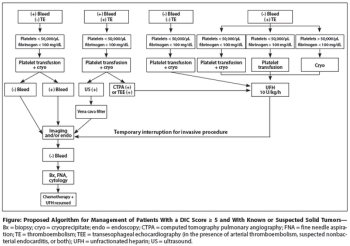
This article summarizes the existing literature on use of radiotherapy for node-positive prostate cancer, as well as the associated outcomes.

Your AI-Trained Oncology Knowledge Connection!


This article summarizes the existing literature on use of radiotherapy for node-positive prostate cancer, as well as the associated outcomes.

We are in urgent need of a randomized trial comparing radiation plus ADT vs ADT alone for men with node-positive prostate cancer.

Despite the lack of level 1 evidence, retrospective studies support the need for appropriate local treatment, even in the context of node-positive disease.

“Treat the underlying cause” has been the classic mantra for the treatment of disseminated intravascular coagulation. Whenever feasible in disseminated intravascular coagulation associated with solid tumors, this principle appears to hold good.

Bleeding and thrombosis in cancer patients cause significant morbidity and are a leading cause of mortality well before the malignancy is directly life-threatening.

This review summarizes the published data regarding the association of disseminated intravascular coagulation (DIC) with solid tumors, the laboratory diagnosis of DIC, the clinical presentation and types of tumors typically seen with DIC, and the pathophysiologic mechanisms involved; it also offers suggestions for management of DIC in patients with solid tumors.

In early 2015, determining the optimal treatment regimen for a patient with metastatic melanoma remains challenging.

The unprecedented improvements in melanoma therapeutics over a short period of time have been nothing short of extraordinary. It may be that we are now on a road to cure, but surely the destination is not yet in sight.

While the last several decades saw a lack of progress in treatment outcomes in this setting, the outlook has recently changed dramatically, driven by a deepening understanding of melanoma biology and host immunology.

In this article, we summarize the systemic therapies now available for melanoma, with a focus on the recently approved agents for cutaneous melanoma; discuss important considerations in selecting a treatment from the available options; and highlight some of the promising investigational approaches for this disease.